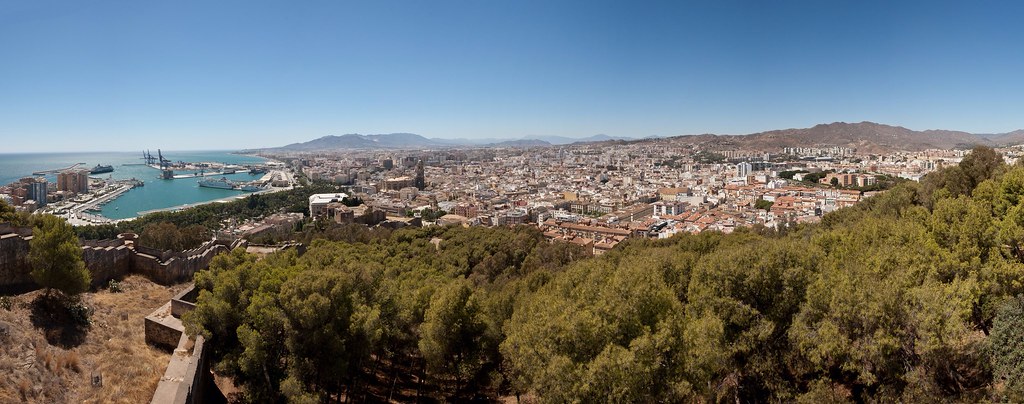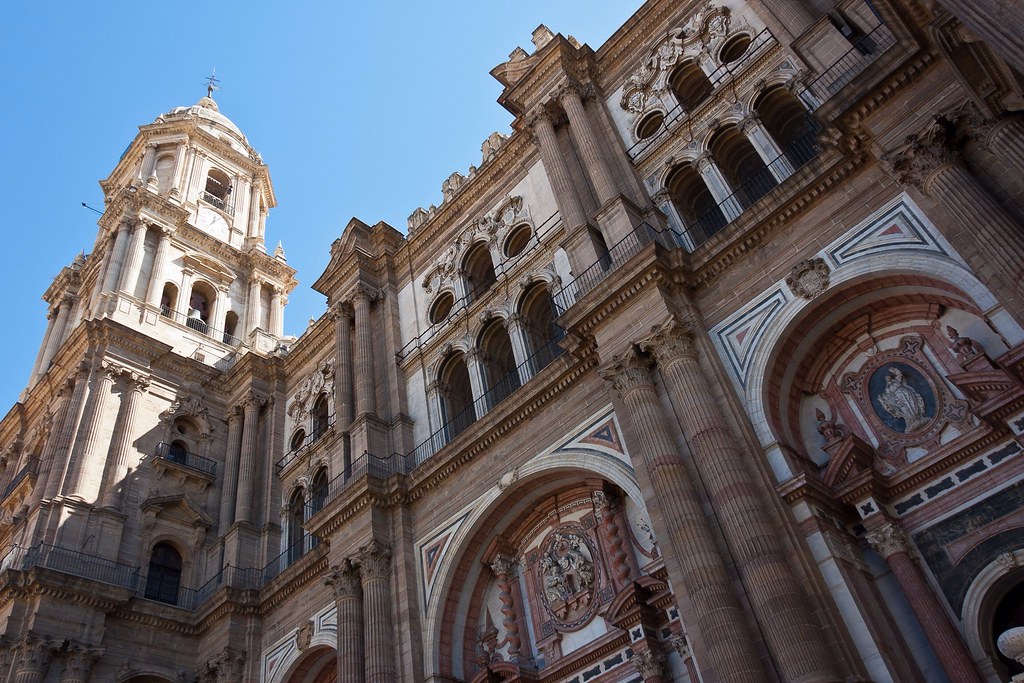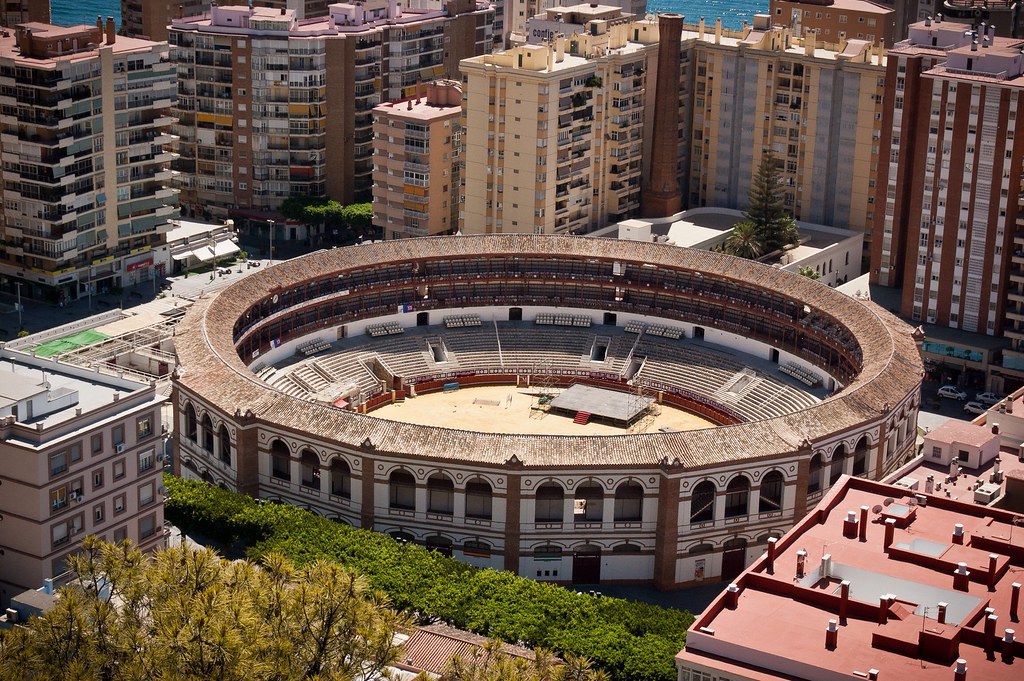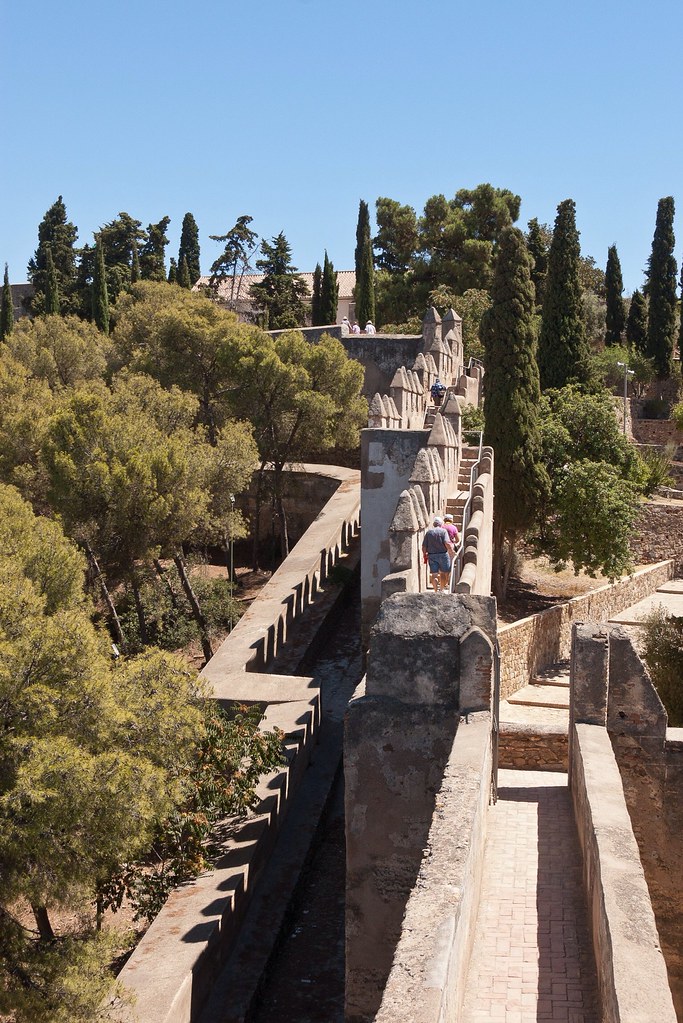
Above: A panoramic shot of Málaga, taken from the Castle of Gibralfaro. The Ryndam is docked on the far left.
Málaga's history spans about 2,800 years, making it one of the oldest cities in the world. It was founded by the Phoenicians in about 770 BC, then from 218 BC it was ruled by the Roman Republic and later the Roman Empire. After the fall of the empire it was under Islamic Arab domination as for 800 years, but in 1487 it came under the dominion of the Spaniards in the Reconquista.

Above: Historic streets of Málaga.
Our visit to the city took place on a very hot August day, but rather than lay on the beach (not my style!) I decided to walk around the city and climb up to visit the castles.

Above: One of Málaga's many beaches, very close to where the Ryndam docked.
The archaeological remains and monuments from the Phoenician, Roman, Arabic and Christian eras make the historic centre of the city an "open museum", displaying its rich history of more than 3,000 years. The Roman theatre of Málaga, which dates from the 1st century BC, was rediscovered in 1951 and I wandered around it briefly (it is not as impressive as the one in Cartagena - see previous post).

Above: Málaga Cathedral.
I also visited the cathedral which was quite imposing but very beautiful. Málaga Cathedral along with the Episcopal Palace were planned with Renaissance architectural ideals but there was a shortfall of building funds and they were finished in Baroque style.

Above: Inside the cathedral.
Two of the main attractions in Málaga are the Castle of Gibralfaro, which is connected to the Alcazaba, the lower fortress and royal residence ('Alcazaba' comes from the Arabic al-qasbah, meaning 'citadel'). Both were built during the Taifa period (11th century) and extended during the Nasrid period (13th and 14th centuries). The Alcazaba stands on a hill within the city. Originally, it defended the city from the incursions of pirates. Later, in the 11th century, it was completely rebuilt by the Hammudid dynasty.

Above: The Alcazaba.
The Alcazaba is arguably the best preserved citadel in Spain and like many of the military fortifications that were constructed in Islamic Spain, it features a quadrangular plan. It was protected by an outer and inner wall, both supported by rectangular towers, between which a covered walkway led up the slope to the Gibralfaro Castle (this was the only exchange between the two sites).

Above: The outer walls of the Alcazaba.
The entrance gate of the Alcazaba doubles back on itself, a design intended to make progress difficult for attacking forces. The pathway winds up through gardens, with a number of elaborate fountains, passing the gateways of Puerta de las Columnas, which reuses materials from the Roman ruins, and Torre del Cristo which turns at right angles to again impede the progress of attackers.

Above: Arches in the Governor's palace, the inner citadel.
After passing through several gates, open yards with beautiful gardens of pine and eucalyptus trees, and the inner wall through the Puerta de Granada, one finds the 11th and 14th century Governor's palace, the inner citadel. It was organized around a central rectangular courtyard with a triple-arched gateway and some of the rooms have been preserved to this day.

Above: More architectural detailing leading out into the courtyard garden.
After visiting the Alcazaba, I continued up to the hill to Castle of Gibralfaro. On the way up to the castle, there was a great view of an old bullring which is still in use today for concerts and tours.

Above: An old Spanish bull ring.
The castle was even more impressive than the Alcazaba, and one of the highlights was walking around the castle walls and exploring turrets and dungeons!

Above: The castle wall - it was possible to walk all the way around which took a good 30 minutes!

Above: One of the many turrets along the castle wall.
Thanks for reading this post. I'll leave you with a shot of me on the castle walls, overlooking downtown Málaga. You can see the Alcazaba on the bottom left, and the cathedral just above it.


No comments:
Post a Comment